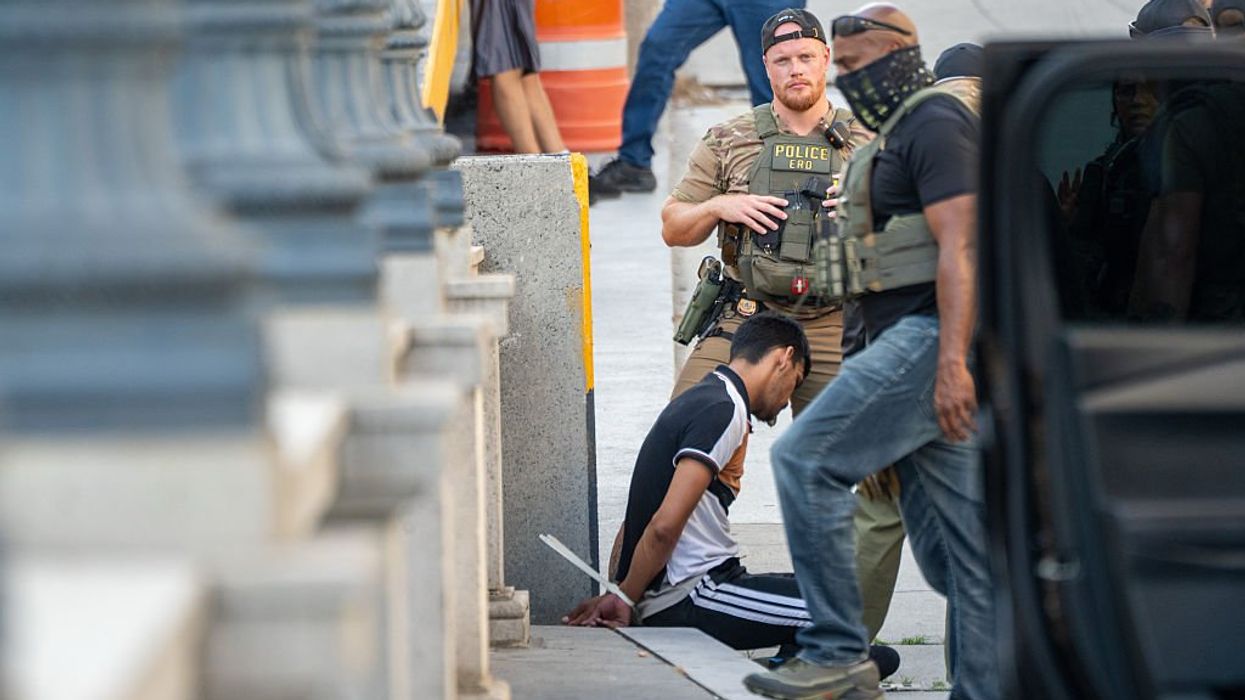David J. Toscano is an attorney and a former member of the Virginia House of Delegates. He is the author of Fighting Political Gridlock: How States Shape Our Nation and Our Lives, University of Virginia Press, 2021, and Bellwether: Virginia’s Political Transformation, 2006-2020, Hamilton Books, 2022.
Sometimes, the people want change so much that they resort to other measures that bypass their elected representatives. So goes the rationale for the direct democracy concept called “initiative and referendum,” a process by which citizens in various states can collect enough signatures to place proposals to change state constitutions or statutes directly before the people for a vote. Presently, 26 states include an initiative process in their constitutions, including 18 that permit direct amendments to their constitution. While South Dakota was the first to adopt this approach in 1898, most enacted these provisions in the early part of the 1900s.
This approach is dramatically different and easier from the way our U.S. Constitution allows amendments. With citizen initiative, all that is needed are sufficient signatures to place a referendum on the ballot, and a simple majority to vote for it.
The last decade has brought dramatic changes in states with the initiative process–even when the legislature opposed them. Some form of m arijuana use has been legalized in 18 states via citizen initiative. Ballot initiatives won increases in the minimum wage in 11 states, including Florida (in 2020 with 61 percent of the vote), Missouri (in 2018 with 62 percent), and Arkansas (in 2018 with 68 percent); Florida’s was the only one passed through constitutional amendment while the others were statutory enactments. Since 2017, Medicaid expansion has passed in seven states where the issue was put on the ballot, including by constitutional amendment in South Dakota (in 2022 with 56 percent of the vote), Missouri (in 2020 with 53 percent), and Oklahoma (in 2020 with 50.5 percent).
DOBBS THE DISRUPTOR
Passage of what might be characterized as progressive measures has proven extremely discomforting to GOP legislators, their priorities threatened by the voice of the people. But what really concerned conservative legislatures has been the success of direct democracy following the U.S. Supreme Court decision to overturn Roe v. Wade in the Dobbs case.
First, there was Kansas and Kentucky, red states where voters recently stomped down efforts to restrict abortion. Then, there was Montana, where voters defeated a personhood amendment that would outlaw abortion but conceivably contraception as well.
Perhaps most significant was Michigan, where abortion rights activists engineered not only passage of a state constitutional right to reproductive freedom in November 2022, but in the process, helped bring the state a Democratic trifecta it had not enjoyed in decades. Citizens in 10 states are now actively engaged in placing abortion rights directly before the voters. And conservative state legislatures are not only devising creative ways to defeat them, but to strangle direct democracy in the process.
EXHIBIT A–OHIO
The poster child for this fight is Ohio, a state where reproductive freedom advocates are organizing to pass a constitutional amendment this November.
The Buckeye state installed “initiative and referendum” in its constitution in 1912, shortly after former Republican President Theodore Roosevelt argued to its constitution convention that provisions in the state’s new charter include a way that the people, by popular vote, can “readily … amend it if at any point it works injustice…..” Direct democracy was a key tenet of the progressive movement, which held that it could provide critical checks on the power of the legislature and the courts.
The Ohio Convention embraced Roosevelt’s position and the state joined about 20 other states who adopted this form of direct democracy in the early 1900s.
Ohio Republicans now want to change all of that. Many citizens felt burned by passage of an amendment to increase the minimum wage in 2006 and then by two constitutional amendments that required nonpartisan redistricting and which were used as the basis of the state’s Supreme Court slap down, in seven separate rulings, of Republican line-drawing before the last election. In addition to a reproductive rights amendment, Ohioans may also see a measure to increase the minimum wage on next year’s ballot. These efforts at direct democracy are threatening the conservative agenda.
In response, Republican legislators have advanced a measure to increase the passage threshold for constitutional amendments to 60 percent (In Michigan, Kentucky and Kansas, votes for abortion rights gained between 52 and 59 percent) and intend to place the proposal on the ballot in August–- three months before the reproductive rights measure gets a vote. Former state lawmaker Michael Curtin suggests that in its 220 years of statehood, the Ohio General Assembly has never scheduled an August special election to enact such a major change to the Ohio Constitution. If the gambit succeeds, the threshold for the November abortion proposal will rise from 50 percent to 60 percent for passage.
Ohio lawmakers have been wallowing in hypocrisy throughout this debate, starting with their decision to schedule the vote on the proposed restrictions for this August. That decision contradicts a pledge they made only last year not to schedule these initiatives for low turnout elections like those that occur in August. In addition, they are also proposing to make it much harder for Ohioans to qualify future initiatives for the ballot by expanding signature-gathering quotas to all 88 counties from the current 44. Last November, the state’s GOP Attorney General, Frank LaRose, publicly stated that he could not support those restrictions to the initiative process.
The Ohio proposals are so brazen that they have prompted criticism from four previous governors, two Democrats and two Republicans. But they will soon be on the Ohio ballot.
RED STATES EMBRACE A COMMON APPROACH
Ohio is not alone in its attempts to change the rules of direct democracy. After successful ballot measures to legalize marijuana and expand Medicaid, and a new push by reproductive rights advocates to place constitutional provisions protecting abortion on the ballot in 2024, the Republican-controlled Missouri legislature is fast-tracking a constitutional amendment for the November 2023 ballot to raise the approval threshold for proposed constitutional amendments from a simple majority to 60 percent.
Like Ohio, they also are attempting to make it more difficult to collect the signatures required to place proposed amendments on the ballot. Similar efforts are also underway in Oklahoma, and Florida, which already has a 60 percent threshold, is seeking to raise it to a 2/3rds majority. According to the Ballot Initiative Strategy Center (BISC), at least 58 bills restricting the ballot initiative process have been introduced in state legislatures this year.
Even in conservative states, however, efforts to curtail direct democracy do not always succeed. Arizona voters recently rejected a proposed amendment that would have allowed the legislature to more easily repeal citizen-led ballot initiatives after approval. Last June, voters In Arkansas and South Dakota resoundingly rejected Republican-authored constitutional amendments to raise the threshold for passage of most ballot initiatives from a simple majority to 60 percent. In November 2022, South Dakotans then proceeded to pass a constitutional amendment to expand Medicaid with 56 percent of the vote.
DIRECT DEMOCRACY DEBATE IN A HYPER PARTISAN WORLD
If we did not live in such a hyper partisan world, it would be easier to have a thoughtful philosophical debate about the degree to which direct democracy should drive our policy choices. Our founders had such a debate, and they chose an amendment process for the U.S. Constitution that provided for little citizen input. Similarly, most state constitutions did not initially include provisions for direct democracy, notwithstanding proposals by Thomas Jefferson to include legislative referendums to allow citizens to approve laws. Virginia’s founders rejected Jefferson’s advice, and, to this day, the Commonwealth’s constitution is among the most difficult to amend.
It was only 100 years later that the movement for direct democracy gained enough strength to change amendment processes in many states. It was a time much like our own, when the checks and balances did not appear to be working, and people looked for ways to overrule legislatures that appeared to be out of their control.
Nonetheless, questions remain. How easy should it be for state constitutions to be amended? Should a process like Alabama’s be emulated, which makes changes to their constitution so easy that it includes over 900 amendments? Should we be worried that the “passions” of the public will be allowed to overrule the deliberative nature of the legislative process? How great should be the concern that citizen advocacy will force a legislature into monetary decisions that were not considered when the initiative was proposed? Passage of California’s Prop 13 in 1978, for example, created severe budget problems for the state government.
These are not easy questions to resolve as we debate the power of state legislatures versus citizen initiatives in which the direct will of the people is honored. Unfortunately, what is happening in red states is not about political philosophy, but about power. And citizen initiative remains one opportunity to counter that power and ensure that the will of the people is respected.





















